The cabbage soup diet review. Cabbage Soup Diet: A Comprehensive Review of Ingredients, Effectiveness, and Health Implications
What is the Cabbage Soup Diet. How does it promise rapid weight loss. Is it a sustainable and healthy approach to dieting. What are the potential risks and side effects of following this diet plan.
Understanding the Cabbage Soup Diet: A Quick Overview
The Cabbage Soup Diet is a short-term weight loss plan that has gained popularity among those seeking rapid results. This diet revolves around consuming large quantities of a low-calorie cabbage soup, supplemented with specific foods on different days of the week. Proponents of the diet claim it can lead to significant weight loss in just seven days, with some reporting losses of up to 10 pounds or more.
But is this diet as effective as it claims to be? And more importantly, is it safe? Let’s delve deeper into the intricacies of the Cabbage Soup Diet to understand its mechanisms, potential benefits, and drawbacks.
The Core Components of the Cabbage Soup Diet
At the heart of this diet is a simple, fat-free cabbage soup that dieters are expected to consume two to three times daily. The soup typically contains:
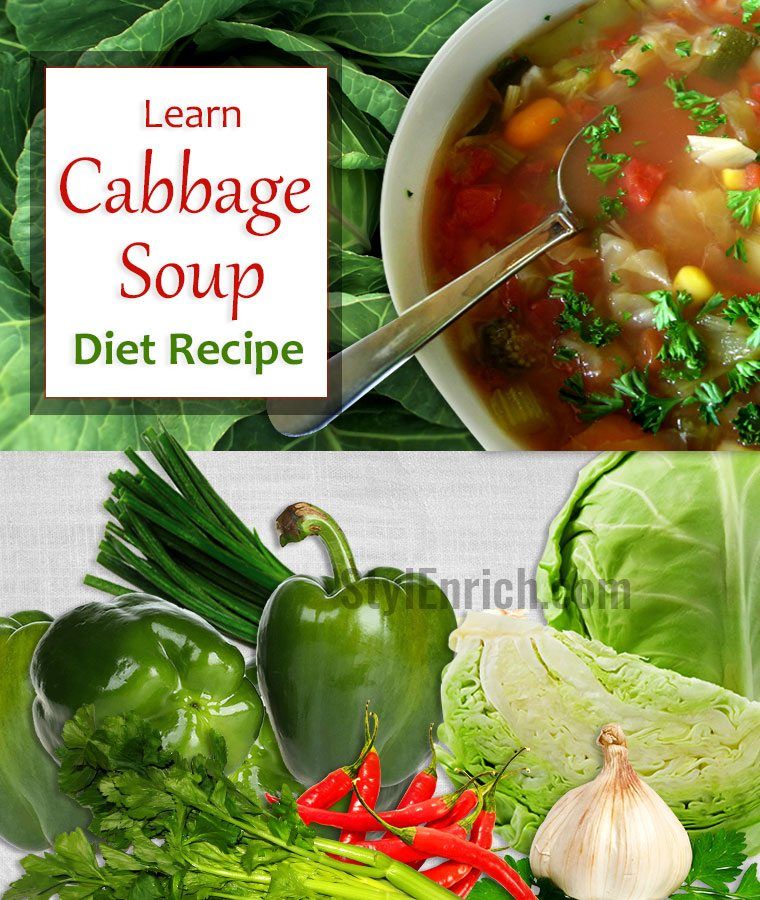
- Cabbage (of course)
- Tomatoes
- Green peppers
- Mushrooms
- Onions
- Bouillon or broth
While the exact recipe may vary slightly, the principle remains the same: a low-calorie, vegetable-based soup that forms the foundation of every meal.
The 7-Day Meal Plan: What Can You Eat?
The Cabbage Soup Diet follows a strict 7-day meal plan, with each day allowing specific foods in addition to the soup:
- Day 1: Fruit (except bananas)
- Day 2: Vegetables (preferably leafy greens, no starchy vegetables)
- Day 3: Fruits and vegetables
- Day 4: Bananas and skim milk
- Day 5: Beef (or skinless baked chicken) and tomatoes
- Day 6: Beef and vegetables
- Day 7: Brown rice, unsweetened fruit juices, and vegetables
This structured approach aims to provide some variety while maintaining a very low-calorie intake throughout the week.
The Promise of Rapid Weight Loss: Fact or Fiction?
The Cabbage Soup Diet promises dramatic weight loss in a short period, which is its main attraction. Can you really lose 10 pounds in a week? While it’s possible to see a significant drop on the scale, it’s crucial to understand the nature of this weight loss.
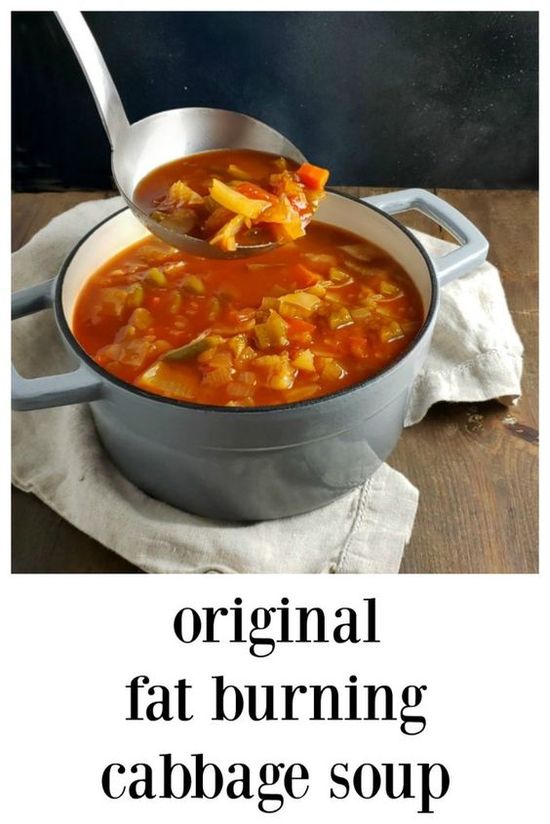
The diet’s extremely low calorie content (often less than 1,000 calories per day) leads to quick weight loss, but this is primarily due to:
- Water loss: The body depletes its glycogen stores, releasing water
- Loss of muscle mass: Low protein intake can lead to muscle breakdown
- Temporary fat loss: Some fat may be burned, but it’s minimal compared to water and muscle loss
Unfortunately, this rapid weight loss is rarely sustainable. Once normal eating patterns resume, most people regain the lost weight quickly, often with additional pounds.
Nutritional Adequacy: Are You Getting What Your Body Needs?
While the Cabbage Soup Diet does include a variety of fruits and vegetables, it falls short in providing a balanced nutritional profile. The diet is severely lacking in:
- Protein: Essential for maintaining muscle mass and various bodily functions
- Healthy fats: Necessary for hormone production and nutrient absorption
- Complex carbohydrates: Important for sustained energy and fiber intake
- Various vitamins and minerals: Due to the limited food choices
This nutritional inadequacy can lead to fatigue, weakness, and potential health issues if the diet is followed for an extended period or repeated frequently.
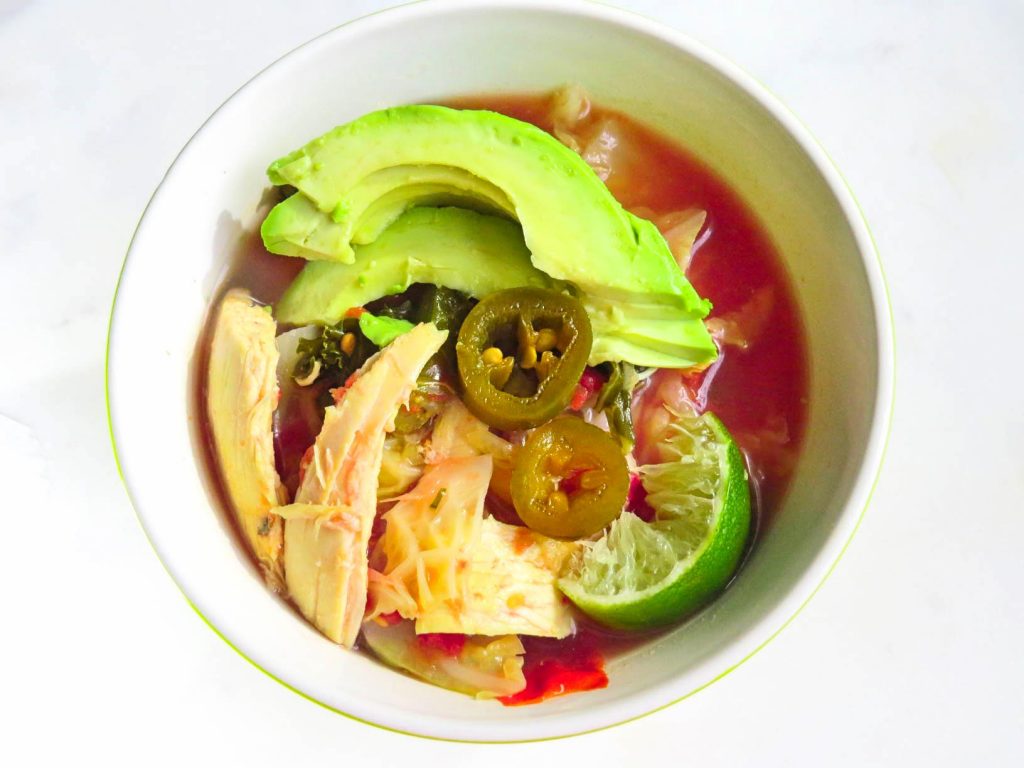
The Risk of Nutrient Deficiencies
Following the Cabbage Soup Diet for more than a week can put you at risk of several nutrient deficiencies. These may include:
- Iron deficiency: Due to lack of iron-rich foods like lean meats and leafy greens
- Calcium deficiency: Limited dairy intake can affect bone health
- Vitamin B12 deficiency: Especially problematic for vegetarians following the diet
- Protein deficiency: Can lead to muscle loss and weakened immune function
To mitigate these risks, some proponents suggest taking a multivitamin supplement during the diet. However, this doesn’t address the fundamental nutritional imbalances of the plan.
Health Implications: Is the Cabbage Soup Diet Safe?
While short-term use of the Cabbage Soup Diet is unlikely to cause serious harm in most healthy individuals, it’s not without risks. Some potential health concerns include:
- Gallbladder issues: Rapid weight loss can increase the risk of gallstones
- Digestive discomfort: The high fiber content may cause bloating and flatulence
- Weakness and fatigue: Due to very low calorie and nutrient intake
- Dizziness and light-headedness: Caused by low blood sugar levels
- Muscle loss: Insufficient protein can lead to breakdown of lean muscle tissue
For individuals with certain health conditions, the diet can be particularly problematic. People with diabetes, for instance, may experience dangerous fluctuations in blood sugar levels due to the diet’s inconsistent carbohydrate intake.
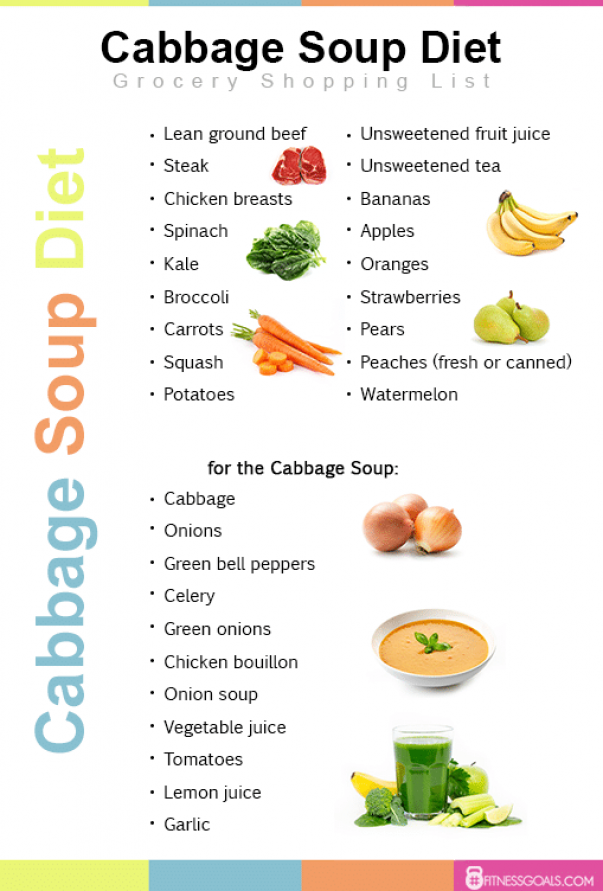
Impact on Existing Health Conditions
The Cabbage Soup Diet can negatively impact various health conditions:
- Diabetes: Unstable blood sugar levels due to inconsistent carbohydrate intake
- Heart disease: Lack of essential nutrients can strain the cardiovascular system
- Kidney problems: High sodium content in the soup may be problematic for those with kidney issues
- Eating disorders: The restrictive nature of the diet can trigger disordered eating patterns
It’s crucial to consult with a healthcare professional before starting any restrictive diet, especially if you have pre-existing health conditions.
Long-Term Effectiveness: Can the Cabbage Soup Diet Lead to Lasting Weight Loss?
While the Cabbage Soup Diet may result in rapid short-term weight loss, it’s not a sustainable approach to long-term weight management. Here’s why:
- Lack of lifestyle changes: The diet doesn’t teach healthy eating habits or address the root causes of weight gain
- Nutritional imbalance: It doesn’t provide the balanced nutrition needed for long-term health
- Yo-yo effect: Rapid weight loss followed by quick regain can lead to a cycle of yo-yo dieting
- Muscle loss: Losing muscle mass can slow down metabolism, making future weight loss more difficult
For sustainable weight loss, experts recommend a balanced diet combined with regular physical activity, aiming for a gradual loss of 1-2 pounds per week.
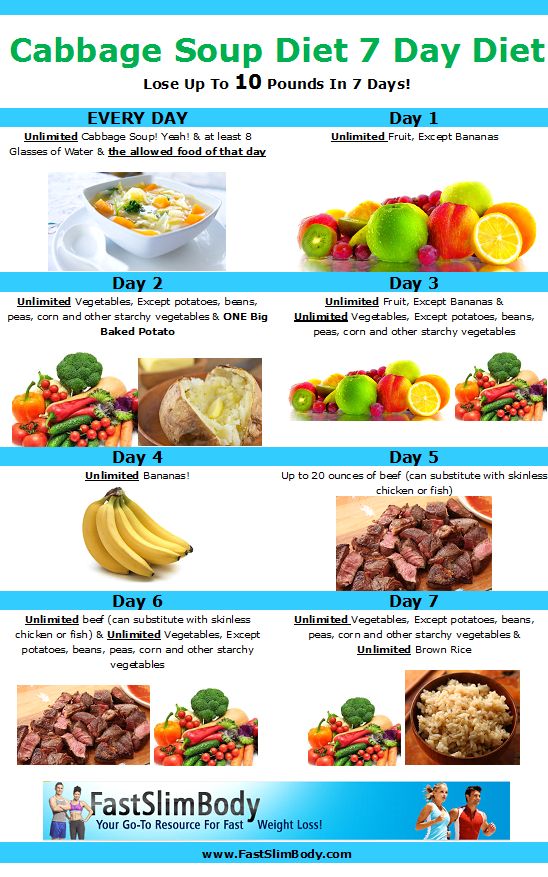
The Importance of Sustainable Weight Loss Strategies
Instead of relying on crash diets like the Cabbage Soup Diet, consider these sustainable approaches to weight loss:
- Balanced nutrition: Include a variety of foods from all food groups
- Portion control: Learn to recognize appropriate portion sizes
- Regular physical activity: Aim for at least 150 minutes of moderate exercise per week
- Mindful eating: Pay attention to hunger cues and eat slowly
- Behavior modification: Address emotional eating and develop healthy coping mechanisms
These strategies not only promote gradual, sustainable weight loss but also contribute to overall health and well-being.
Psychological Impact: The Mental Toll of Restrictive Dieting
While the physical effects of the Cabbage Soup Diet are often discussed, it’s equally important to consider its psychological impact. Extremely restrictive diets can have significant mental and emotional consequences:
- Increased food preoccupation: Constantly thinking about food due to severe restrictions
- Mood swings: Low calorie intake can lead to irritability and mood fluctuations
- Disordered eating patterns: Restrictive diets can trigger or exacerbate eating disorders
- Negative body image: Rapid weight fluctuations can impact self-esteem and body perception
- Guilt and shame: Feeling bad about “cheating” or not sticking to the strict regimen
These psychological effects can persist long after the diet ends, potentially leading to an unhealthy relationship with food and eating.

Developing a Healthy Relationship with Food
Instead of focusing on restrictive diets, it’s more beneficial to cultivate a positive relationship with food:
- Practice intuitive eating: Learn to trust your body’s hunger and fullness cues
- Avoid labeling foods as “good” or “bad”: All foods can fit into a healthy diet in moderation
- Focus on nourishment: Choose foods that make you feel energized and satisfied
- Enjoy meals socially: Don’t let dietary restrictions isolate you from social situations
- Seek professional help: If you struggle with disordered eating, consult a registered dietitian or therapist
By fostering a healthier relationship with food, you’re more likely to maintain a balanced diet and a healthy weight in the long term.
Alternatives to the Cabbage Soup Diet: Healthier Approaches to Weight Loss
If you’re looking to lose weight in a healthier, more sustainable manner, consider these alternatives to the Cabbage Soup Diet:
- Mediterranean Diet: Emphasizes whole grains, fruits, vegetables, lean proteins, and healthy fats
- DASH Diet: Designed to lower blood pressure, but also effective for weight loss
- Flexitarian Diet: A mostly plant-based diet that allows occasional meat consumption
- Weight Watchers: Focuses on portion control and balanced nutrition
- Intuitive Eating: Teaches you to listen to your body’s hunger and fullness cues
These approaches not only promote gradual weight loss but also encourage overall health and well-being.

The Role of Exercise in Sustainable Weight Loss
While the Cabbage Soup Diet doesn’t incorporate exercise, physical activity is crucial for long-term weight management and overall health. Consider incorporating:
- Aerobic exercises: Walking, jogging, cycling, or swimming
- Strength training: Weight lifting or bodyweight exercises
- Flexibility work: Yoga or stretching routines
- High-Intensity Interval Training (HIIT): Short bursts of intense activity
- Daily movement: Taking stairs, parking farther away, or having walking meetings
Remember, the best exercise routine is one that you enjoy and can stick to consistently.
The Bottom Line: Is the Cabbage Soup Diet Worth Trying?
While the Cabbage Soup Diet may offer quick weight loss results, it’s not a sustainable or healthy approach to long-term weight management. The diet’s severe calorie restriction, nutritional imbalances, and potential health risks outweigh its short-term benefits.
Instead of resorting to crash diets, focus on developing healthy eating habits and incorporating regular physical activity into your lifestyle. These sustainable approaches not only promote gradual weight loss but also contribute to overall health and well-being.
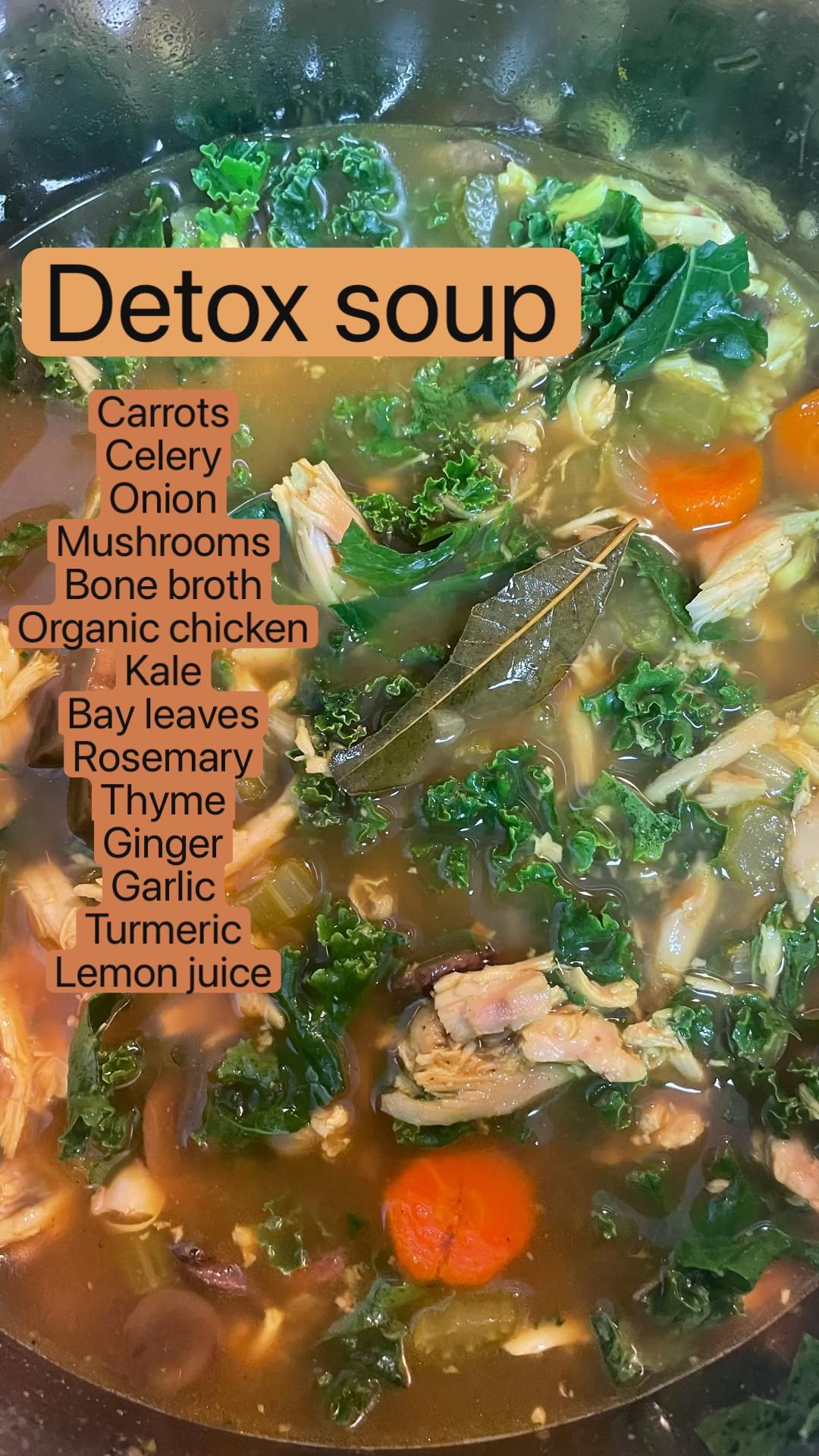
Remember, there’s no one-size-fits-all approach to weight loss. What works for one person may not work for another. It’s always best to consult with a healthcare professional or registered dietitian before starting any new diet or exercise program. They can help you develop a personalized plan that takes into account your individual health needs, preferences, and goals.
Ultimately, the journey to a healthier you should be about nourishing your body, not depriving it. By adopting a balanced approach to nutrition and physical activity, you’re more likely to achieve lasting results and improve your overall quality of life.
Cabbage Soup Diet Review: Ingredients and Effectiveness
Written by Stephanie Watson
Reviewed by Christine Mikstas, RD, LD on September 01, 2022
In this Article
- The Promise
- What You Can Eat
- Level of Effort: Medium
- Does It Allow for Dietary Restrictions or Preferences?
- What Else You Should Know
- What Dr. Melinda Ratini Says:
Fans claim you can drop 10 pounds or more in a week. Some people use it to kick-start their weight loss plan, or to trim a few pounds for a special event.
But before you stock up on cabbage, know that this crash diet won’t help you in the long run, and it doesn’t give your body the nutrients it needs to stay healthy.
Just like the name says, the bulk of this diet is fat-free cabbage soup, eaten two to three times a day with other allowed foods assigned each day. Here’s what you can add:
- Day 1: Fruit, except bananas
- Day 2: Vegetables like leafy greens (not starchy), but no fruit
- Day 3: Fruits and vegetables
- Day 4: Bananas and skim milk
- Day 5: Beef (or baked chicken without the skin) and tomatoes
- Day 6: Beef and vegetables
- Day 7: Brown rice, unsweetened fruit juices, and vegetables
There are different recipes for the soup, which is recommended every day of the diet. They all have similar ingredients, such as tomatoes, green peppers, mushrooms, onions, and bouillon.
They all have similar ingredients, such as tomatoes, green peppers, mushrooms, onions, and bouillon.
Limitations: Your menu options are severely limited on this diet. It gets very boring, very quickly. If you want to try it again, it’s recommended that you wait 2 weeks first.
Cooking and shopping: Get out your soup pot. You will need to make the cabbage soup and cook some of the vegetables recommended in the plan. Your shopping list will be very short for the week.
Packaged foods or meals? No.
In-person meetings? No.
Exercise: The cabbage soup diet doesn’t include exercise, and working out at high levels isn’t a great idea on such a low-calorie diet. Your body just won’t have enough gas in the tank for exercise.
There’s not a lot of room to tweak the diet, since it’s so rigid.
It is low in fat, because you eat mostly vegetables. But it’s not vegetarian or vegan, since some meat is allowed.
Cost: The only cost is for the ingredients, which you buy yourself.:max_bytes(150000):strip_icc()/one-week-cabbage-soup-diet-3061110-step-01-7afd6bbbd6d9459c901acaa570295bc6.jpg) Some websites promoting the diet say you should take a supplement to make up for the nutrients you’ll be missing from food.
Some websites promoting the diet say you should take a supplement to make up for the nutrients you’ll be missing from food.
Support: None. You do this diet on your own.
Does It Work?
You’ll lose weight, but only in the short run. This is strictly a lose-weight quick scheme.
You’ll likely get less than 1,000 calories a day on the limited menu. That’s far fewer than the 2,000 daily calories recommended for most adults.
Since you’re getting so few calories, the pounds come off quickly, but mostly you’ll lose water weight. And chances are, you’ll gain it all back as soon as you start eating a normal diet again.
Health experts don’t recommend following very low-calorie diets unless you’re under a doctor’s care. A better bet is to aim to lose 1 to 2 pounds each week on a healthy, well-balanced diet.
Is It Good for Certain Conditions?
Because it includes so few carbs, this diet could wreak havoc with any diabetes treatment plan.
Salt is not addressed on the plan, so if you’ve been told to cut back on the sodium, you’ll have to hold back on using the salt shaker and bouillon when making the soup or cooking your food.
Since you’ll likely regain any weight that you lose, the diet won’t have a lasting positive impact on heart disease, cholesterol, or high blood pressure.
The Final Word
Though this diet is fast, cheap, and simple, it’s not easy to stick with. It will likely leave you feeling hungry, weak, and bored. You might even feel sick. And if you follow the Cabbage Soup Diet for more than a week, you could run short on key nutrients.
Nor does the diet encourage the necessary lifestyle changes you need to make in order to be healthier and have lasting weight loss.
The drastic weight loss you might experience with The Cabbage Soup Diet can cause health problems and can be dangerous even when it’s done under a doctor’s supervision.
Never start this diet without talking to your doctor first. If they think you need a very low-calorie diet, they’ll likely show you a much healthier way to go about it.
If they think you need a very low-calorie diet, they’ll likely show you a much healthier way to go about it.
© 2022 WebMD, LLC. All rights reserved. View privacy policy and trust info
Cabbage Soup Diet Review: Ingredients and Effectiveness
Written by Stephanie Watson
Reviewed by Christine Mikstas, RD, LD on September 01, 2022
In this Article
- The Promise
- What You Can Eat
- Level of Effort: Medium
- Does It Allow for Dietary Restrictions or Preferences?
- What Else You Should Know
- What Dr. Melinda Ratini Says:
Fans claim you can drop 10 pounds or more in a week. Some people use it to kick-start their weight loss plan, or to trim a few pounds for a special event.
But before you stock up on cabbage, know that this crash diet won’t help you in the long run, and it doesn’t give your body the nutrients it needs to stay healthy.
Just like the name says, the bulk of this diet is fat-free cabbage soup, eaten two to three times a day with other allowed foods assigned each day. Here’s what you can add:
Here’s what you can add:
- Day 1: Fruit, except bananas
- Day 2: Vegetables like leafy greens (not starchy), but no fruit
- Day 3: Fruits and vegetables
- Day 4: Bananas and skim milk
- Day 5: Beef (or baked chicken without the skin) and tomatoes
- Day 6: Beef and vegetables
- Day 7: Brown rice, unsweetened fruit juices, and vegetables
There are different recipes for the soup, which is recommended every day of the diet. They all have similar ingredients, such as tomatoes, green peppers, mushrooms, onions, and bouillon.
Limitations: Your menu options are severely limited on this diet. It gets very boring, very quickly. If you want to try it again, it’s recommended that you wait 2 weeks first.
Cooking and shopping: Get out your soup pot. You will need to make the cabbage soup and cook some of the vegetables recommended in the plan. Your shopping list will be very short for the week.
Packaged foods or meals? No.
In-person meetings? No.
Exercise: The cabbage soup diet doesn’t include exercise, and working out at high levels isn’t a great idea on such a low-calorie diet. Your body just won’t have enough gas in the tank for exercise.
There’s not a lot of room to tweak the diet, since it’s so rigid.
It is low in fat, because you eat mostly vegetables. But it’s not vegetarian or vegan, since some meat is allowed.
Cost: The only cost is for the ingredients, which you buy yourself. Some websites promoting the diet say you should take a supplement to make up for the nutrients you’ll be missing from food.
Support: None. You do this diet on your own.
Does It Work?
You’ll lose weight, but only in the short run. This is strictly a lose-weight quick scheme.
You’ll likely get less than 1,000 calories a day on the limited menu. That’s far fewer than the 2,000 daily calories recommended for most adults.
Since you’re getting so few calories, the pounds come off quickly, but mostly you’ll lose water weight. And chances are, you’ll gain it all back as soon as you start eating a normal diet again.
And chances are, you’ll gain it all back as soon as you start eating a normal diet again.
Health experts don’t recommend following very low-calorie diets unless you’re under a doctor’s care. A better bet is to aim to lose 1 to 2 pounds each week on a healthy, well-balanced diet.
Is It Good for Certain Conditions?
Because it includes so few carbs, this diet could wreak havoc with any diabetes treatment plan.
Salt is not addressed on the plan, so if you’ve been told to cut back on the sodium, you’ll have to hold back on using the salt shaker and bouillon when making the soup or cooking your food.
Since you’ll likely regain any weight that you lose, the diet won’t have a lasting positive impact on heart disease, cholesterol, or high blood pressure.
The Final Word
Though this diet is fast, cheap, and simple, it’s not easy to stick with. It will likely leave you feeling hungry, weak, and bored. You might even feel sick. And if you follow the Cabbage Soup Diet for more than a week, you could run short on key nutrients.
Nor does the diet encourage the necessary lifestyle changes you need to make in order to be healthier and have lasting weight loss.
The drastic weight loss you might experience with The Cabbage Soup Diet can cause health problems and can be dangerous even when it’s done under a doctor’s supervision.
Never start this diet without talking to your doctor first. If they think you need a very low-calorie diet, they’ll likely show you a much healthier way to go about it.
© 2022 WebMD, LLC. All rights reserved. View privacy policy and trust info
menu for the week, table of products, results and reviews of nutritionists
The essence of the alkaline diet is to increase the consumption of foods that increase the pH balance in the blood and reduce the level of acidity in the body.
— Hyperacidity in the blood is thought to be linked to various diseases such as osteoporosis, cancer, heart and vascular disease, so advocates of the alkaline diet claim it can help with treatment and prevention, says nutritionist, member of the National Society of Dietitians Olga Dekker.
Benefits of an alkaline diet
Some potential benefits of an alkaline diet:
- Lots of fruits and vegetables in your daily diet. Fruits and vegetables are rich in vitamins, minerals, antioxidants and other nutrients that boost the immune system and reduce the risk of various diseases.
- Rejection of processed foods. The Alkaline Diet recommends reducing your intake of processed foods, such as junk food and processed foods, which means reducing the amount of harmful additives, sugar, and salt in your diet.
- Reduced inflammation. Some studies have shown that an alkaline diet can help reduce long-term inflammation in the body, which is associated with the risk of developing serious diseases such as cancer, heart disease, and diabetes.
- Reducing the risk of developing stones. A large amount of acid-forming foods (meat, fish and dairy products) can lead to the formation of kidney stones. The alkaline diet, in contrast, favors alkaline-forming foods (fruits and vegetables), which reduces the risk of kidney stones.

— However, it is worth noting that many of these potential benefits of an alkaline diet are still not well understood. Therefore, one should not rely on it as the only way to improve health, warns Olga Dekker .
Cons of the Alkaline Diet
Although the alkaline diet has its potential health benefits, it does have its cons and cons.
Cons:
- The need to consume a large amount of vegetables and fruits. This can be expensive and inconvenient for those who live in regions with limited access to fresh fruits and vegetables.
- Some vegetables and fruits recommended in an alkaline diet may cause allergic reactions.

- Following an alkaline diet can lead to deficiencies in some important nutrients such as protein, iron, zinc and calcium if sufficient attention is not paid to food variety and dosage.
Alkaline diet is contraindicated in people with kidney disease, bladder problems, those taking certain medications that interfere with acid-base balance (diuretics or drugs for diabetes), pregnant women. Also, before starting a diet, people with chronic diseases such as diabetes, cancer, or cardiovascular disease should discuss the diet with their doctor.
What you can eat
When on an alkaline diet, it is recommended to eat more alkaline foods.
| Fruits | lemons, limes, grapefruits, grapes, figs, watermelons, pineapples, mangoes, bananas, feijoas, papayas, etc. | ||||||||||||
| Vegetables | spinach, broccoli, cabbage, cucumbers, green peas, celery, green peppers, corn, carrots, potatoes, pumpkin, onions, garlic, asparagus, sweet potatoes, tomatoes, beans, peas, leeks, okra , mushrooms, Brussels sprouts, green onions, etc. | ||||||||||||
| Nuts and seeds | almonds, pine nuts, hazelnuts, hazelnuts, cashews, macadamia, coconut, sunflower seeds, sesame seeds, pumpkin seeds, flax, etc. | ||||||||||||
| Legumes | lentils, peas, beans, chickpeas, tofu, etc. | ||||||||||||
| Beverages | water, green tea, natural juices from fruits and vegetables, and some types of dairy products (yogurt and kefir) it is recommended to avoid acidic foods.
In addition to these foods, you should also avoid alcohol and sweets, as they can reduce the level of alkalinity in the body. Alkaline Diet Weekly MenuThe main foods recommended for the alkaline diet include vegetables, fruits, nuts, seeds, leafy greens, and some protein groups (such as soy products). At the same time, acidic foods such as meats, dairy products, grains, and candy should be limited. Day 1Photo: Shutterstock Breakfast: water-based oatmeal with berries, green tea. Day 2Photo: Shutterstock Breakfast: apple, muesli with almond milk. Day 3Photo: Shutterstock Breakfast: buckwheat porridge with fruit, tea. Day 4Photo: Shutterstock Breakfast: avocado and tomato toast, tea. Day 5Photo: Shutterstock Breakfast: fruit yogurt, green tea. Day 6Photo: Shutterstock Breakfast: fruit salad, yogurt, green tea. Day 7Photo: Shutterstock Breakfast: omelet with vegetables, green tea. ResultsResults after an alkaline diet may vary depending on the goals and the initial state of the body. However, overall results may include:
– However, it is worth noting that the results may be temporary. For a long-term effect, it is necessary to combine an alkaline diet with a healthy lifestyle, playing sports and giving up bad habits, says nutritionist, member of the National Society of Dietitians Olga Dekker. Nutritionists Reviews — As with any other diet, the alkaline diet has its pros and cons. It can be helpful for people who eat few vegetables and fruits, and for those who eat a lot of acid-forming foods. However, do not forget that scientific evidence confirming the effectiveness of this diet is not enough, says Olga Dekker. – Also, the alkaline diet may not be suitable for some people, such as those who have kidney problems or are taking certain types of medications. In addition, an excess of alkaline foods in the body can lead to hypercalcemia (an excess of calcium in the blood), which can lead to undesirable health effects. Therefore, before starting an alkaline diet, I would recommend discussing the possibility of following it with a qualified dietitian or doctor. Popular Questions and AnswersPopular questions about the alkaline diet are answered by nutritionist, member of the National Society of Dietitians Olga Dekker. What are the complications of an alkaline diet?– Despite some potential benefits, an alkaline diet can lead to a number of complications, especially if it is not balanced and does not meet the needs of the body. Some of the possible complications may include: • A strict alkaline diet may result in deficiencies in essential nutrients, including proteins, fats, vitamins, and minerals. In general, if an alkaline diet is not balanced and does not meet the needs of the body, it can lead to serious complications and health problems. Before starting any diet, you should consult your doctor. How often can you go on an alkaline diet?— As with any other diet, it is not recommended to sit on an alkaline diet for too long, otherwise you may run into a lack of important nutrients. It is recommended that you consult with your doctor or dietitian to determine how often and for how long you can go on an alkaline diet based on your individual needs and goals. Tea diet – benefits, menu, reviews Tea is not only invigorating, but also healthy. It is able to speed up the metabolism and increase the stamina of the body. In addition, tea slows down the aging process due to its antioxidant action. Not surprisingly, this drink is a component of many effective diets. Tags: Diets Fast weight loss tea diet tea diet Shutterstock Tea leaves help cleanse the body and promote weight loss, which is why doctors recommend including them in your diet. Green tea is especially useful – several effective diet options have been invented on its basis. We share ways to lose weight with the help of tea. Contents of the article Green tea dietThere are two ways to use green tea for weight loss – follow strict fasting days or a complete diet. Unloading on tea should not be carried out for more than a day. It is used to remove excess fluid, due to which you can quickly lose a couple of kilograms. You need to drink up to 2.5 liters of green tea per day. It is allowed to add milk and a little honey. There is also a green tea diet for 10 days. Use the menu from any low-calorie food system and add green tea to your diet. Sample green tea diet menuFirst day
Second day
ADVERTISING – CONTINUED BELOW Third day
Fourth day
Green tea diet – reviews Reviews of those who lose weight with the help of a green tea diet say that it is really effective. In addition to losing extra pounds, you will get rid of edema and the habit of being content with less food, since tea reduces hunger. If you drink 3-6 cups of the drink a day, the fat layer will gradually go away. Diet “Green tea, egg and raisins” On the Internet, you can find “a diet called” 1 kilogram per day “. The essence of the diet is that you eat strictly by the hour every day and eat only a few foods. Among them are green tea, eggs, raisins, boiled lean meat, apples and tomato juice. As part of the diet, avoid salt and eat strictly on time. You can not replace products from the menu with others and skip meals. Remember to drink enough water. You need to be careful with your diet – people with heartburn and other gastrointestinal problems do not like this diet at all. Green tea diet menu
Diet on tea with milkWhy drink tea on a diet if the monotony is very tired? With milk, according to nutritionists. This is a great combination for a cleansing diet. It eliminates the feeling of hunger, but it contains very few calories. Once a week (but not more often) you can spend fasting days on tea with milk. At this time, drink two large cups of the drink in the morning or afternoon. With what to drink tea on a diet to lose weight for sure? There are several effective milkweed recipes that everyone can cook. Tea leaves and milk “work” as a team – the ingredients neutralize each other’s negative properties. Medium-fat milk (up to 1.5 percent) reduces the negative impact of tea alkaloids on the body, and the tannins of tea leaves save you from discomfort in the stomach and help absorb fats. Medium cup – 26 kcal. A drink should replace food, but not clean water. Every day drink 2 liters of water or mineral water without gas. Some recommend making a light sports complex, but be guided by your well-being. If you are not ready for such drastic measures, try a sparing diet option. Eat oatmeal in the morning and a light, oil-free vegetable salad in the evening. It is not recommended to switch to milkweed for a long period of time. After all, even a healthy body cannot cope with such a load. The body will begin to react: the stomach will swell, there will be a feeling of weakness and headaches, and the pressure will drop. Use either black or green leaf tea as part of a milk-tea diet. Forget tea bags. For a diet drink, only low-fat milk (from 1.5 to 2.5% fat) is suitable. English milk teaTake 2 teaspoons of loose tea and pour boiling water (150 ml) over it. Next, heat an empty container (400 ml) with steam and fill it one-third with milk, and the rest with ready-made tea leaves. Let the drink cool down a bit. Classic milk teaMilk tea should be prepared a few days before short-term unloading. Take a liter pan and fill it with milk (1 liter). Set the drink to heat up to 80 degrees. Throw in just a couple of tablespoons of loose leaf tea (preferably green) and close the container for 20 minutes. Next, clean the milk from the tea leaves and put the milk tea in the refrigerator. Some people add spices to the drink, like cinnamon and red pepper. “Lazy” milk tea This drink is less effective for weight loss, but it is easy to prepare. You need to pour 1 part of cold milk into 2 parts of tea. Garlic milk teaDon’t be surprised! This type of milk drink is the most effective. After all, garlic activates metabolism and improves the health of the cardiovascular system. First you need to grind 3 cloves of garlic and pour them with milk (1.5 liters). Boil the drink over low heat for no more than 25 minutes. Next, drop 3 teaspoons of tea leaves into the hot milk. After 20 minutes of infusion, the drink will be ready. Lemon tea dietWhat else to drink tea on a diet if you don’t like milk? We suggest adding lemon to tea. You need to drink tea with lemon after every meal, with the exception of dinner, if it is late. By combining tea consumption, a balanced diet, and moderate-intensity exercise, you can easily say goodbye to being overweight. Healthy fruit from the citrus family activates the production of natural collagen and improves immunity. To speed up the process of losing weight on tea, you need to add not only lemon, but also ginger root to the drink. It is recommended to drink 3-5 tea cups of tea per day to speed up the metabolism. It is forbidden to add milk, sugar or cream to the drink. You need to drink tea half an hour before meals to reduce the feeling of hunger. Of course, you can’t do without restrictions – fried and fatty foods, sweets and sugary drinks should be excluded from the diet. Choose the right lemon tea recipe. Lemon ginger tea Cut the ginger root into small pieces and drop them into the teapot. Take a small lemon and cut it into two parts. Tea with mint and lemonThe base of the diet drink is ginger. For cooking, you need about 7 teaspoons of chopped ginger. Mix ginger root with 6 teaspoons of lemon juice and a couple of mint leaves. At the end, you can add a pinch of black pepper. The entire mixture must be poured into 1.5 liters. ipatka. After 30 minutes, a low-calorie cocktail can be tasted. Green tea with ginger and lemonTake 4 teaspoons of green tea with 4 tablespoons of ginger and pour boiling water over the mixture (1.5 liters). After a while, you can add a little lemon juice and honey. After 30 minutes, the drink will be ready. It is best served chilled or chilled. Iced tea with lemon and ginger Refreshing lemon-ginger tea is especially relevant in summer. |







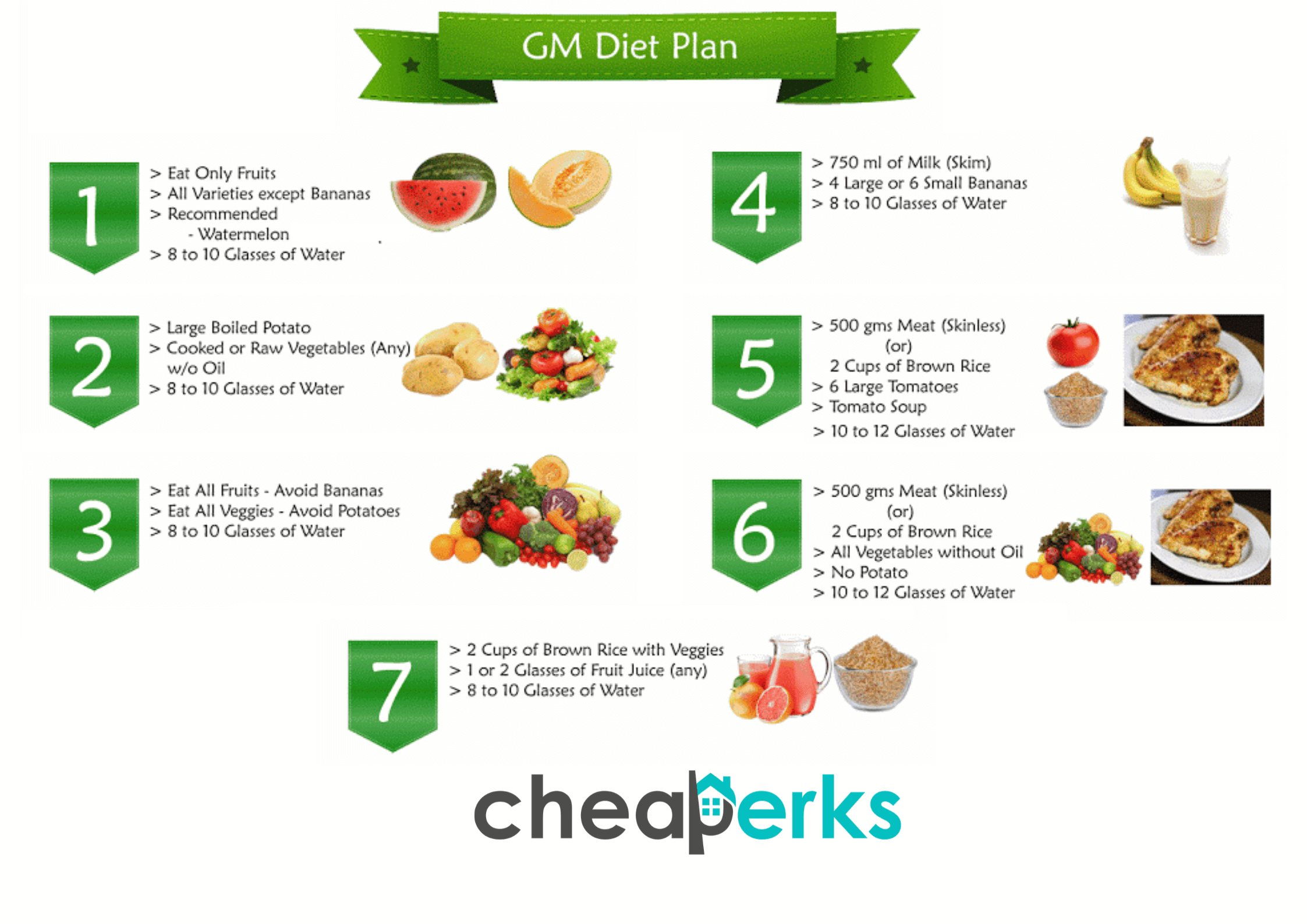


 Remember that the drink should not be drunk after 6 pm, otherwise you may experience problems with sleep.
Remember that the drink should not be drunk after 6 pm, otherwise you may experience problems with sleep.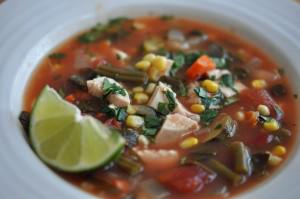
 The result of losing weight in a week will be 3-5 kilograms.
The result of losing weight in a week will be 3-5 kilograms.
 Along with this, you get all the main trace elements and do not feel hungry in the next few hours. The daily norm of milkweed is 1.6 liters. Every 2 hours you need to take 200 ml. Give up “meals” until 20.00.
Along with this, you get all the main trace elements and do not feel hungry in the next few hours. The daily norm of milkweed is 1.6 liters. Every 2 hours you need to take 200 ml. Give up “meals” until 20.00. So, what can you drink tea with on a diet? We share the most popular recipes.
So, what can you drink tea with on a diet? We share the most popular recipes. At the end, add mint or lemon balm leaves. Or – cloves, pepper, turmeric or ginger.
At the end, add mint or lemon balm leaves. Or – cloves, pepper, turmeric or ginger. Of course, one slice of lemon is not enough. But with regular use of lemon juice, we get up to 40% of vitamin C from the recommended daily allowance. Plus, lemon is a natural flavor that enhances the taste of tea without the extra calories. So if after a tea diet you want to maintain your weight, we recommend replacing high-calorie drinks with leaf tea with lemon.
Of course, one slice of lemon is not enough. But with regular use of lemon juice, we get up to 40% of vitamin C from the recommended daily allowance. Plus, lemon is a natural flavor that enhances the taste of tea without the extra calories. So if after a tea diet you want to maintain your weight, we recommend replacing high-calorie drinks with leaf tea with lemon. Squeeze one half and pour crushed ginger with juice. And cut the second one into small pieces. Pour boiling water (about a liter) over ginger and the second half of a lemon. After 15 minutes, the drink is ready. Before use, remove the pieces of ginger and lemon.
Squeeze one half and pour crushed ginger with juice. And cut the second one into small pieces. Pour boiling water (about a liter) over ginger and the second half of a lemon. After 15 minutes, the drink is ready. Before use, remove the pieces of ginger and lemon.